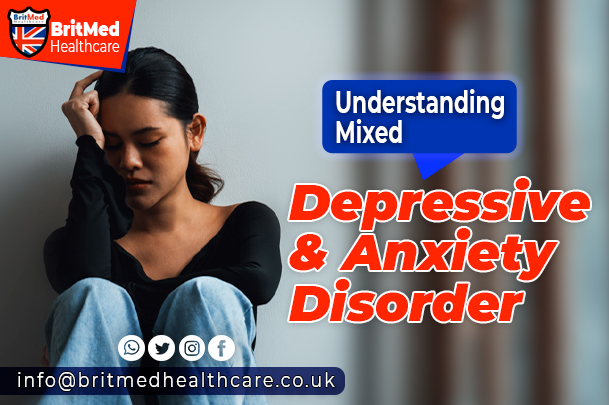Understanding Mixed Depressive and Anxiety Disorder
Mixed Depressive and Anxiety Disorder (MAD) is a complex and debilitating mental health condition that affects millions of people worldwide. It is a condition in which an individual experiences symptom of both depression and anxiety simultaneously, often making it challenging to diagnose and treat. In this article, we will delve into the understanding of MAD, its causes, symptoms, and treatment options, as well as provide guidance on how to manage this condition.
What is Mixed Depressive and Anxiety Disorder?
MAD is a type of mood disorder that is characterized by the presence of depressive symptoms, such as feelings of sadness, hopelessness, and loss of interest in activities, alongside anxiety symptoms, such as excessive worry, fear, and restlessness. This co-occurrence of depressive and anxiety symptoms can lead to a range of emotional and physical symptoms, including changes in appetite and sleep patterns, fatigue, and difficulty concentrating.
Causes of Mixed Depressive and Anxiety Disorder
The exact causes of MAD are not yet fully understood, but research suggests that it is likely to be the result of a combination of genetic, environmental, and psychological factors. Some possible triggers include:
– Stressful life events, such as the loss of a loved one or a significant change in circumstances
– Traumatic experiences, such as childhood abuse or neglect
– Family history of depression or anxiety disorders
– Hormonal changes, such as those experienced during pregnancy or menopause
– Medication side effects
Symptoms of Mixed Depressive and Anxiety Disorder
The symptoms of MAD can vary widely from person to person, but common symptoms include:
Depressive symptoms:
– Feelings of sadness, hopelessness, or emptiness
– Loss of interest in activities or hobbies
– Changes in appetite or sleep patterns
– Fatigue or lethargy
Anxiety symptoms:
– Excessive worry or fear
– Restlessness or feeling on edge
– Difficulty concentrating or making decisions
– Irritability or mood swings
Diagnosis and Treatment
Diagnosing MAD can be challenging due to the overlap of symptoms with other mental health conditions. A comprehensive diagnosis typically involves a mental health professional conducting a thorough clinical assessment, including a physical examination, medical history review, and psychological evaluation.
Treatment for MAD typically involves a combination of medication and psychotherapy. Common medications used to treat MAD include:
– Selective serotonin reuptake inhibitors (SSRIs) for depression
– Benzodiazepines or beta blockers for anxiety
Psychotherapy approaches commonly used to treat MAD include:
– Cognitive-behavioural therapy (CBT) to address negative thought patterns and behaviours
– Interpersonal therapy (IPT) to improve communication skills and relationships
– Mindfulness-based stress reduction (MBSR) to reduce stress and anxiety
Managing Mixed Depressive and Anxiety Disorder
While treatment is essential for managing MAD, there are also several self-care strategies that individuals can implement to help manage their symptoms:
– Engage in regular exercise to reduce stress and anxiety
– Practice mindfulness techniques, such as meditation or deep breathing
– Connect with others through social support networks or therapy groups
– Priorities self-care activities, such as getting enough sleep and eating a balanced diet
– Consider keeping a journal or diary to track symptoms and monitor progress
Conclusion
Mixed Depressive and Anxiety Disorder is a complex condition that requires a comprehensive understanding of its causes, symptoms, and treatment options. By working with a mental health professional and implementing self-care strategies, individuals can effectively manage their symptoms and improve their overall quality of life. It is essential to remember that MAD is not a sign of weakness or failure, but rather a treatable condition that requires patience, understanding, and support.
References:
https://pubmed.ncbi.nlm.nih.gov/10788678/
https://www.ncbi.nlm.nih.gov/pmc/articles/PMC9291022/
https://adaa.org/understanding-anxiety
Websites:
Britmed Healthcare: https://britmedhealthcare.co.uk/
Nightingale Hospital: https://www.nightingalehospital.co.uk/
Top Doctors: https://www.topdoctors.co.uk/doctor/ahmed-el-missiry
You can also book, Contact us on WhatsApp 08009708017




